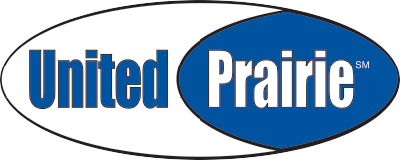Japanese Beetle Management Guidelines
apanese beetles (Fig. 1) have been arriving throughout Illinois over the last couple of weeks, and are becoming pretty conspicuous in some areas. Our crops are well behind their usual progress when Japanese beetle emergence occurs, which could impact scouting and management decision making. Several of my colleagues recently wrote an in-depth article on the history, distribution and management of this pest1; you can read the full open-access article here. Some notes on management follow by crop:
Corn: Silk clipping is the primary concern with Japanese beetle infestations in corn. While the beetles will nibble on the leaves also, this does not amount to much. Many fields this season are likely to begin silking when Japanese beetles are at their peak, so scouting will be especially important. Silk clipping by Japanese beetles (as well as corn rootworms) can interfere with pollination. The effect of this feeding can be compounded by heat and drought stress2, which could be an issue in many fields this year given the late timing of pollination. Feeding tends to be concentrated on field edges, so thorough scouting within the field is necessary to determine if a treatment is justified. A rescue treatment with an insecticide is recommended if the following additions are observed:
- Silks are being clipped to within ½ inch throughout the field
- There are 3 or more beetles per ear (consider reducing this number if silk clipping is occuring under drought and heat-stress conditions)
- Pollination is ongoing/less than 50% complete (especially during the first 5 days of silking).
Soybean: Control of Japanese beetles in soybean is rarely justified in Illinois, even though the damage is often conspicuous. Soybeans are fairly tolerant of defoliation in general. The only “wild card” this year is that, like corn, our soybeans are well behind their normal level of development when Japanese beetles (and other defoliators) become active. Making a rescue treatment decision for defoliators is a three-step process:
- Determine the overall level of defoliation in the field. The recommended economic threshold is 30% defoliation prior to bloom, and 20% defoliation after bloom. Train your eye to accurately measure defoliation, and be careful not to over-estimate the extent of the damage (Fig. 2)
- If a field is above the economic threshold, sample using a sweep net, shake sheet, or other sampling method to identify the insect responsible and verify that it is still present in the field. (Avoid “revenge” applications, which will not provide an economic return).
- Choose an insecticide and rate that will provide effective control of the target insect. (Efficacy results from 2018 can be found in the 2018 Applied Research Results on Field Crop Pest and Disease Control report here. Results from trials conducted previously at the University of Illinois can be found in the “On Target” summaries of field crop insect management trials here.
Most insecticides that control Japanese beetles have a relatively short period of residual control. This is no big deal in corn, as the critical period to protect silks is short anyway. In soybean, the short period of residual activity is another great reason to abide by the economic thresholds for defoliating insects; yield-reducing numbers of Japanese beetles in soybean are rare, and multiple applications for this insect are usually a wasted expense.
1 Shanovich et al. 2019. Journal of Integrated Pest Management 10: 9
2 Steckel et al. 2013. Journal of Economic Entomology 106: 2048-2054
Author contact: Nick Seiter | nseiter@illinois.edu | 217.300.7199
Source: University of Illinois

